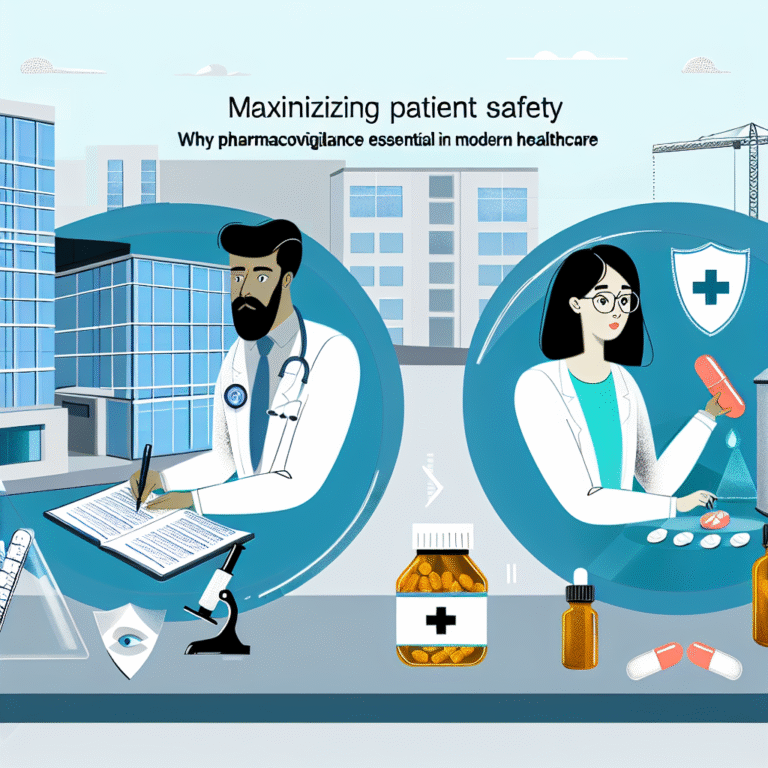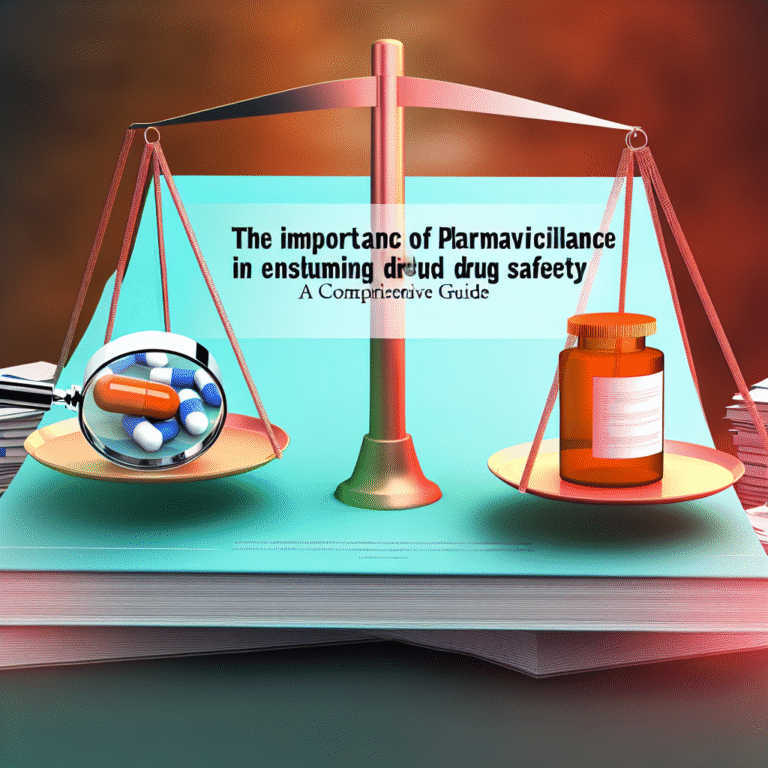The Importance of Pharmacovigilance: Ensuring Patient Safety Through Effective Adverse Event Reporting
The Importance of Pharmacovigilance: Keeping Patients Safe with Good Reporting
Introduction
In the world of healthcare, making sure patients are safe is super important. Right in the middle of keeping patients safe is something called pharmacovigilance. This is all about watching how drugs work and making sure they’re safe for people by reporting any problems, also known as adverse events. Pharmacovigilance involves figuring out, analyzing, understanding, and stopping bad effects or other issues related to drugs. It’s a big deal in healthcare because it helps make sure the good things about drugs are more than the bad things.
Watching drug safety isn’t just important; it’s something we have to do because it keeps the public healthy. Reporting bad events is a key part of pharmacovigilance and helps keep patients safe by finding problems early and fixing them right away. In this blog, we’ll talk about what pharmacovigilance is all about, why it’s important to report bad events, and how these things work together to keep patients healthy and safe everywhere.
What Pharmacovigilance is All About
– Finding Problems: The first thing in pharmacovigilance is spotting bad events. These can happen in doctor’s offices, after the drug is sold, or from what patients say. Using sources like health records, feedback from patients, and studies, doctors can see patterns and find bad reactions to drugs.
– Understanding Problems: After finding a bad event, it must be checked carefully to see if the drug caused it. This means looking closely at details, comparing data, and maybe doing more research to be sure.
– Stopping Problems: Once it’s clear what caused a problem, plans are made to stop it from happening again. This might mean changing how much of the drug to take, making information clearer, or even recalling the drug if needed.
– Sharing Info: Being open is very important in pharmacovigilance. Good communication means getting the right info to doctors, health officials, and patients. This includes updates on drug safety, risks, and what to do to fix events.
Why Reporting Bad Events is Important
Reporting bad events is a key part of pharmacovigilance for many reasons:
1. It helps understand drug safety by showing how drugs work outside of tests.
2. It gives real-world proof of drug effects, showing how things like age or other drugs affect safety.
3. It finds rare or serious bad events that couldn’t be seen in early tests.
4. It helps with making rules by giving proof for making labels or warnings.
5. It keeps the public safe by allowing early fixes, like taking drugs off the market to prevent harm.
What Makes a Good Bad Event Reporting System
A solid system for reporting bad events includes:
– Easy to Use: It should be simple for doctors and patients to use it.
– Confidential: It needs to keep patient information private while being open about problems.
– Fast: Quick reporting and checking help solve safety issues right away.
– Education: Doctors need to know about how to report and why it’s important.
– Tech Use: Digital tools can make collecting and checking data quicker.
– Global Teamwork: Working together worldwide helps keep drug safety better.
– Clear Feedback: Sharing updates with reporters keeps everyone engaged.
– Accurate Data: Good data accuracy is needed for reliable insights.
The Challenges of Pharmacovigilance
Even though it’s important, pharmacovigilance faces some challenges:
– Not enough reporting can stop finding safety issues.
– Different standards worldwide can make things hard to compare.
– Rare events are hard to catch because they may show up later.
– Balancing quick data with detailed checks can be tough.
– Combining data from different places needs good systems and methods.
Stories Showing Pharmacovigilance’s Impact
A good example is when a drug for heart issues was found to harm the liver in some people, thanks to reports. The drug was then recalled to stop more harm. Reporting issues with a vaccine also led to better usage tips, improving safety. These show how important pharmacovigilance is in keeping patients safe.
Ways to Make Pharmacovigilance Better
To make pharmacovigilance even better, we can:
– Strengthen rules to ensure responses to problems happen quickly.
– Promote awareness so everyone knows to report problems.
– Use tech like AI to better analyze data and find patterns.
– Encourage teamwork among drug companies and health officials.
– Give rewards for reporting to motivate doctors and patients.
– Keep improving practices to meet new challenges and advances.
Conclusion
Pharmacovigilance is key to keeping patients safe and healthcare standards high. By spotting, understanding, stopping, and talking about bad events, it not only helps keep drugs safe but also supports good rule-making. A good pharmacovigilance system needs teamwork from doctors, officials, companies, and patients.
As part of healthcare, we must all work together to make reporting issues normal and necessary in healthcare. By doing this, we ensure that patients stay safe and healthy with continued improvements in drug safety.





